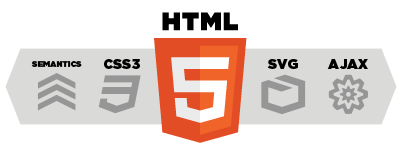The type of events which are flowing from web browser to the web server may be called client-sent events.
Along with HTML5, WHATWG Web Applications 1.0 introduces events which flow from web server to the web browsers and they are called Server-Sent Events (SSE). Using SSE you can push DOM events continously from your web server to the visitor's browser.
The event streaming approach opens a persistent connection to the server, sending data to the client when new information is available, eliminating the need for continuous polling.
Server-sent events standardizes how we stream data from the server to the client.
Web Application for SSE:
To use Server-Sent Events in a web application, you would need to add an element to the document.
The src attribute of
The URL would point to a PHP, PERL or any Python script which would take care of sending event data consitently. Following is a simple example of web application which would expect server time.
DOCTYPE HTML>
<html>
<head>
<script type="text/javascript">
/* Define event handling logic here */
script>
head>
<body>
<div id="sse">
<eventsource src="/cgi-bin/ticker.cgi" />
div>
<div id="ticker">
<TIME>
div>
body>
html>
Server Side Script for SSE:
A server side script should send Content-type header specifying the type text/event-stream as follows.
print "Content-Type: text/event-stream\n\n";
After setting Content-Type, server side script would send an Event: tag followed by event name. Following example would send Server-Time as event name terminated by a new line character.
print "Event: server-time\n";
Final step is to send event data using Data: tag which would be followed by integer of string value terminated by a new line character as follows:
$time = localtime();
print "Data: $time\n";
Finally, following is complete ticker.cgi written in perl:
- !/usr/bin/perl
print "Content-Type: text/event-stream\n\n";
while(true){
print "Event: server-time\n";
$time = localtime();
print "Data: $time\n";
sleep(5);
}
Handle Server-Sent Events:
Let us modify our web application to handle server-sent events. Following is the final example.
DOCTYPE HTML>
<html>
<head>
<script type="text/javascript">
document.getElementsByTagName("eventsource")[0].
addEventListener("server-time", eventHandler, false);
function eventHandler(event)
{
// Alert time sent by the server
document.querySelector('#ticker').innerHTML = event.data;
}
script>
head>
<body>
<div id="sse">
<eventsource src="/cgi-bin/ticker.cgi" />
div>
<div id="ticker" name="ticker">
[TIME]
div>
body>
html>
Before testing Server-Sent events, I would suggest to make sure if your web browser supports this concept.
-
Average:
-
Reads(3119)
-
Trackback(0)
-
Permalink





















Comments (0)